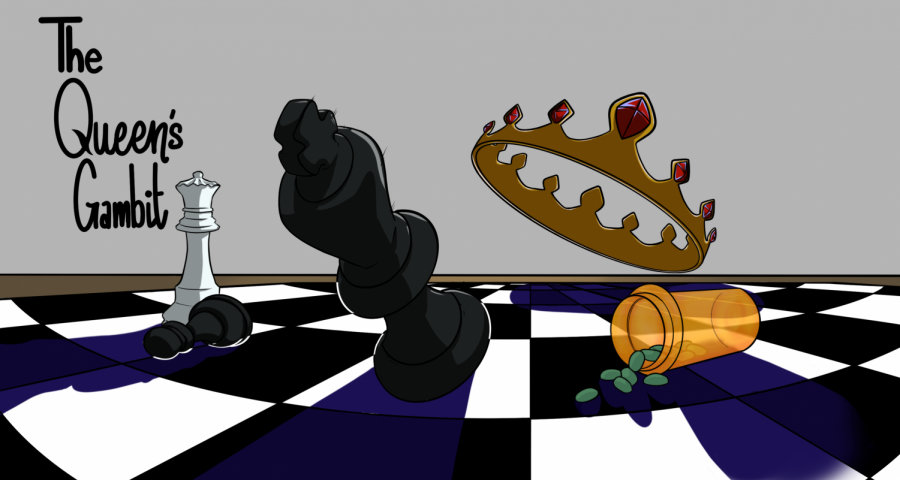Queen’s Gambit Review
December 8, 2020
On paper, Netflix’s The Queen’s Gambit should not have been Netflix’s most-watched limited series of all time—it doesn’t contain the typical character tropes of today’s most popular shows. Yet, it amassed 62 million views in only its first month and is most certainly Netflix’s biggest fall hit. So what drew viewers to The Queen’s Gambit?
Based on a 1983 novel by Walter Tevis, the cerebral drama is a period piece set in the 1960s that follows orphaned Beth Harmon as she rises to international chess prestige. Starring Anya Taylor-Joy, the beginning episodes follow newly orphaned Beth as she leads a new life at the Methuen House, an orphanage. From the beginning, Beth’s blank stare and quiet nature casts her as undeniably strange. The orphanage hands out green pills they call vitamins for the girl’s “dispositions.” These pills are actually child tranquilizers, and Beth’s growing dependence on them follows her long after she leaves the orphanage. While at the Methuen House, Beth finds solace in the basement with a man called Mr. Shaibel, who teaches her the game of chess. Beth’s prodigious chess talent is intensified by the high of her tranquilizers. Once she is adopted, her world shifts from the subdued walls and uniforms of the orphanage to the suburban world of Kentucky. Behind the walls of her high schools, Beth quickly finds her footing in the world of competitive chess. She is soon on the brink of chess fame, all the while nursing her abuse of the green pills. Beth begins international competition—immersing herself in the male-dominated world of chess, and in turn she amasses international recognition. Although Beth most definitely exhibits phenomenal talent, she is female—a fact that seems to outshine her skill. Beth is often alone, and it is in these moments when Anya Taylor-Joy’s performance truly shines. Through her facial expressions and movement, Taylor-Joy is able to depict not only the reality of addiction, but the great difficulty of rehabilitation.
The cerebral game of chess does not seem enthralling or lively. Truth be told, most would not expect a board of 64 squares to inspire the excellence of The Queen’s Gambit. And yet, the show’s seven episodes are far from a bore. The answer to the show’s popularity lies in its immersion of its narrative. Anya Taylor-Joy’s ruminative performance coupled with the vintage aesthetic of The Queen’s Gambit creates a truly binge-worthy show. Through the miniseries, the viewer learns to understand Beth and her genius—which risks being undercut by her debilitating addiction. The Queen’s Gambit is every bit as enthralling as the reviews suggest, and the show is truly an immersive experience.









Mickey Jones • Dec 9, 2020 at 8:43 am
I too loved Queen’s Gambit. Thanks for the review. An interesting and cool Academy related fact: Grammy award winning composer, Carlos Rafael Rivera, the composer for the Queen’s Gambit, has worked closely with our guitar program at Albuquerque Academy. In 2014, our Albuquerque Academy Honor Guitar Quartet gave the world premiere of a piece (Bow Chasers) that was commissioned from him for the New Mexico Classical Guitar Festival. In 2008, the Albuquerque Academy guitar faculty co-commissioned another piece from Carlos entitled Tantra. The Academy guitar students played a vital role in bringing that piece to life.